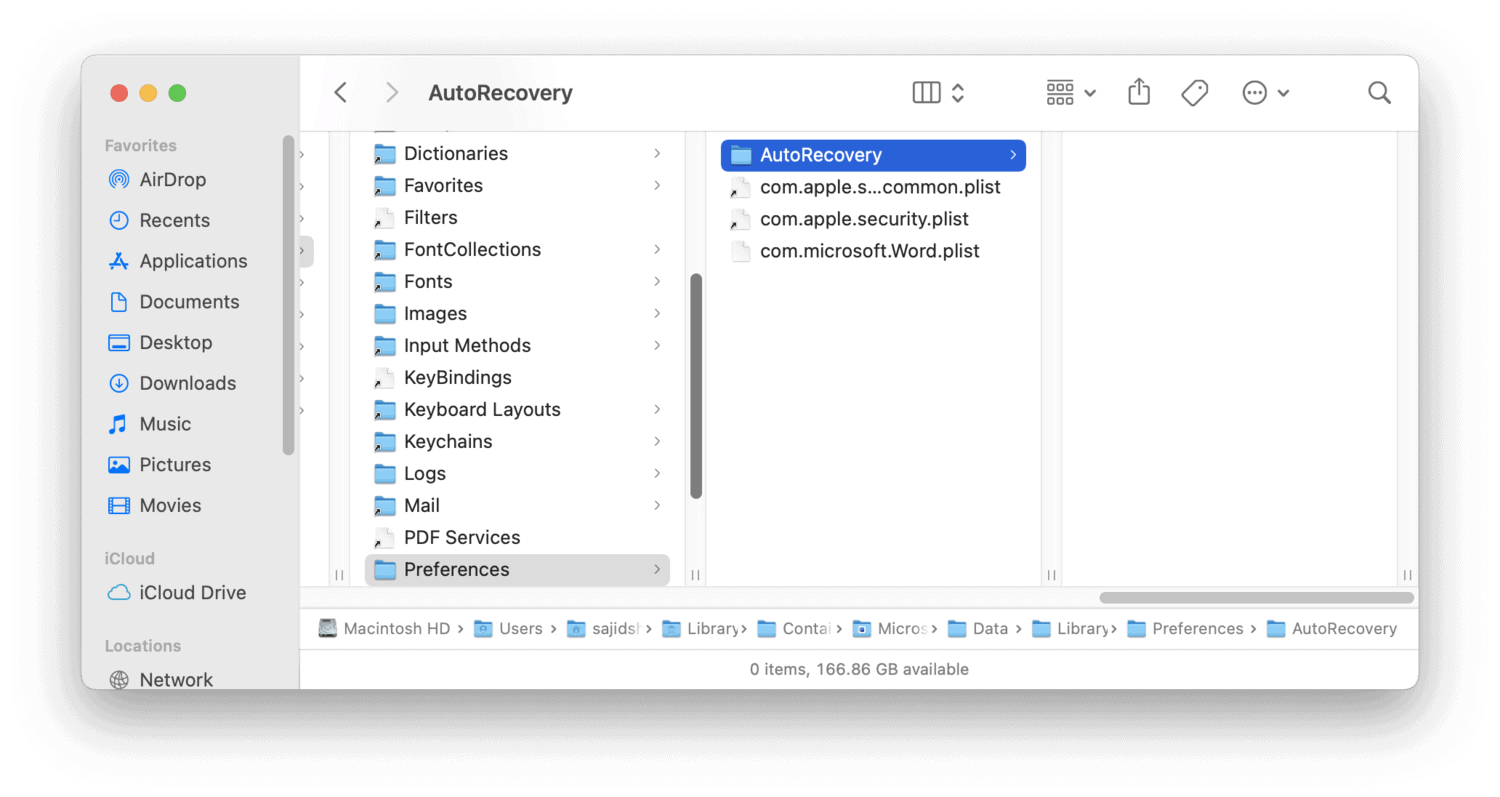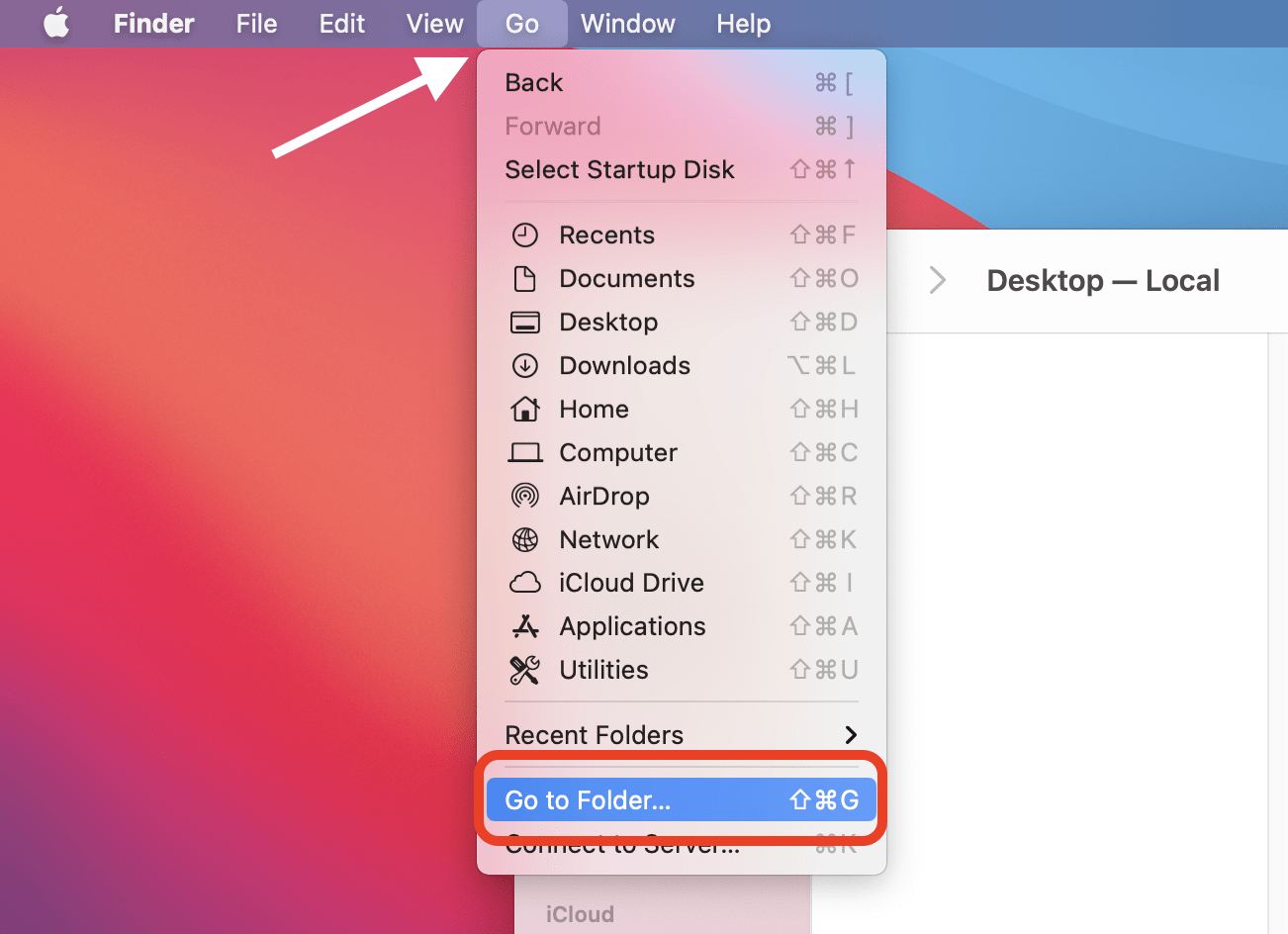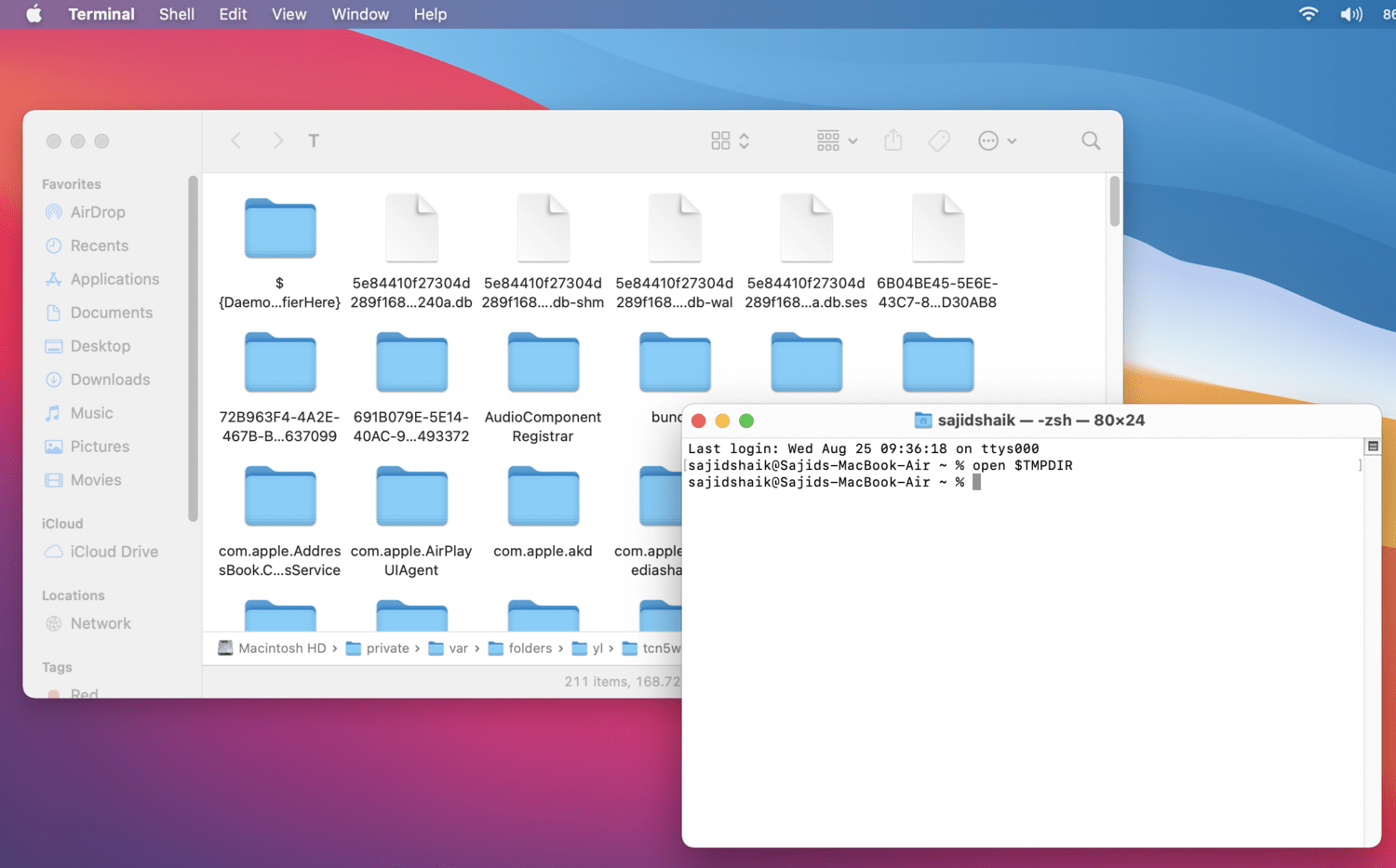Get Back Your Work: How To Recover Unsaved Word Document Mac Files Today
Losing a document you've spent hours on, maybe even days, can feel like a real punch to the gut. It's that moment of panic when Word unexpectedly closes, or your Mac decides to restart without warning, and you realize you never clicked "Save." So, you're left staring at an empty screen, a knot forming in your stomach, wondering if all your hard work is just gone.
It's a pretty common situation, honestly. We've all been there, you know, caught up in the flow of writing, and saving just slips our mind. Then, a little glitch, a sudden freeze, and poof! Your document seems to vanish. It's a frustrating experience, to say the least, and it makes you feel pretty helpless, doesn't it?
But hold on a second! Before you throw your hands up in despair, there's actually a good chance your unsaved Word document on your Mac isn't lost forever. There are some clever ways to bring it back, and we're going to walk you through them, step by step, so you can get your precious work back. It's more possible than you might think, really.
Table of Contents
- Understanding Word's Safety Nets on Mac
- Step-by-Step Guide to Manual Recovery
- When Manual Methods Don't Cut It: Other Ways to Try
- Tips to Keep Your Documents Safe Going Forward
- Frequently Asked Questions
Understanding Word's Safety Nets on Mac
It's kind of comforting to know that Microsoft Word, even on a Mac, has a few tricks up its sleeve to help you out when things go wrong. These built-in features are there to catch your work before it completely disappears, which is pretty nice. So, let's talk about what these safety nets are and how they actually work, you know, just to get a basic idea.
AutoRecover: Your First Hope
One of the best things Word does for you is something called AutoRecover. This feature, basically, saves copies of your document at regular intervals, even if you haven't manually hit the save button. It's like a little digital assistant quietly making backups in the background, which is very helpful. If Word crashes or your Mac shuts down unexpectedly, AutoRecover is usually the first place to look for your work, honestly.
The frequency of these automatic saves can be adjusted, so you can tell Word how often to create these temporary backups. By default, it's often set to every 10 minutes, but you can change that to a shorter time, like every minute or two, which is a good idea for important projects. This means that, at worst, you might only lose a few minutes of work, which is pretty manageable, right?
Temporary Files: The Hidden Gems
Beyond AutoRecover, your Mac also creates temporary files as you work on documents. These are, in a way, like scratch pads that Word uses to keep track of changes before they're finalized and saved into your main document. They're usually hidden away in system folders, not really meant for you to see directly, but they can be a lifesaver if everything else fails. It's kind of a last resort, you know.
These temporary files are, you might say, a bit more elusive than AutoRecover files. They don't have friendly names and aren't organized in an obvious way. But, with a little detective work, they can sometimes hold fragments of your unsaved text. It's a bit like finding a needle in a haystack, but a possible one, you know, if you're really desperate.
Step-by-Step Guide to Manual Recovery
Okay, so you've just lost your document, and that sinking feeling is setting in. Don't worry, though, we're going to walk through the most common and effective ways to get your unsaved Word document back on your Mac. These steps are pretty straightforward, and you can usually do them yourself, which is nice. So, let's get started, you know, right away.
Using AutoRecover to Find Your File
This is, honestly, your best bet for getting back an unsaved Word document. Word is pretty smart about trying to recover files when it reopens after a crash. So, the first thing you should always try is just opening Word again. Often, it will automatically present you with a recovery pane, which is pretty convenient.
Checking the AutoRecovery Folder
If Word doesn't pop up a recovery pane right away, you can manually look for the AutoRecover files. They are stored in a specific place on your Mac. Here’s how you can find them, which is actually pretty simple:
- First, open your Finder.
- Then, click on "Go" in the menu bar at the top of your screen.
- After that, select "Go to Folder..." from the dropdown menu.
- Now, a little box will appear. Type this path into it:
~/Library/Containers/com.microsoft.Word/Data/Library/Preferences/AutoRecovery/and then hit "Go." - You should see a folder open up. Look for files that have names like "AutoRecovery save of [Your Document Name].doc" or something similar. They might have a `.asd` or `.docx` extension.
- If you find something, double-click it to open it in Word. If it opens, save it right away to a new, safe location. It's really important to do that.
This folder, you know, is where Word keeps those temporary safety copies. It's a good place to check, and often, you'll find what you need there. It's pretty much the first place I'd look, honestly.
Opening from Word's Document Recovery Pane
Sometimes, even if Word doesn't automatically show you the recovery pane on startup, you can still access it. This happens, like, if you closed Word too quickly after a crash or something. Just open a new, blank Word document. Look on the left side of the Word window for a "Document Recovery" pane. It usually appears there if there are unsaved files. If you see it, just click on the file you want to restore and save it.
Hunting for Temporary Files
If AutoRecover doesn't give you any luck, don't give up just yet. There are other temporary files that Word might have created. These are a bit trickier to find, as they're often hidden deep within your system. But, with a little digging, you might just find some remnants of your work. It's kind of like a treasure hunt, but for your documents.
Using Finder and Terminal
This method involves using a bit of your Mac's command line, called Terminal. Don't be scared, though; it's pretty simple if you follow the steps. This is where those "hidden gems" we talked about earlier might be, you know, waiting for you.
- Open Finder again.
- Go to "Applications" and then "Utilities."
- Find and open "Terminal." It looks like a black box with text.
- In the Terminal window, type this command exactly as it appears:
open /tmpand then press Enter. This will open a folder that often contains temporary files. - Look for files that start with `~` or `~$` followed by your document's name, or just random characters. They might also have a `.tmp` extension.
- You can also try typing `ls -lt` in the Terminal and pressing Enter to see a list of recently modified files in your current directory. This might show you some temporary Word files.
- If you find a suspicious file, try dragging it to your Desktop and then changing its extension to `.doc` or `.docx`. Then, try opening it with Word. It might not be perfect, but you could get some of your text back, which is better than nothing, right?
This method is a bit more involved, but it can really pay off if the easier methods don't work. It's a bit like how you might recover your google account if you forgot your password, you know, a different kind of process.
Checking the Trash
Sometimes, in a moment of panic or just by accident, you might have moved the file to the Trash without realizing it. It sounds simple, but it happens more often than you'd think. It's like how you might check the recycle bin for deleted text messages on your Android device. So, it's always worth a quick look.
- Click on the Trash icon in your Dock.
- Look through the items there. Sort by date added if that helps you find recent files.
- If you spot your document, drag it out of the Trash and save it to a safe place.
It's a really basic step, but honestly, sometimes the simplest solutions are the ones that work. You just never know, right?
When Manual Methods Don't Cut It: Other Ways to Try
So, you've tried the AutoRecover folder and even dug around in the temporary files, but still no luck? Don't despair just yet! There are a few other avenues you can explore, especially if you have backups or use cloud services. These might be a bit more involved, but they could definitely help you get your work back, you know, if the direct approaches don't pan out.
Looking at Time Machine Backups
If you're using Apple's Time Machine for backups, you're in a pretty good position. Time Machine regularly saves snapshots of your entire Mac, so there's a good chance it has a version of your document, even if it wasn't saved. It's like a digital time capsule, basically.
- Connect your Time Machine backup drive to your Mac.
- Open the folder where your Word document was supposed to be saved (or your Documents folder if you never saved it).
- Click the Time Machine icon in your menu bar and select "Enter Time Machine."
- Use the arrows on the right side of the screen to go back in time to a point before you lost the document.
- When you find a version of your document, select it and click "Restore."
This is, honestly, one of the most reliable ways to recover almost any file, not just Word documents, if you have Time Machine set up. It's a very powerful tool, you know.
Cloud Storage Saves
Do you use services like OneDrive, Dropbox, or Google Drive to save your documents? If so, there's a good chance your document might be there, even if you thought it was only on your Mac. These services often have their own version history or recovery features, which is really helpful.
- OneDrive/Dropbox: Check the "Version History" for your document. Most cloud services keep older versions, so you can roll back to a previous save.
- Google Drive: If you were working in Google Docs and downloaded it as a Word file, the Google Docs version history is incredibly robust. You can often go back to very early versions.
It's worth logging into your cloud accounts and checking their respective trash or version history features. Sometimes, you know, the cloud can be a real lifesaver.
Considering Data Recovery Software
When all else fails, and your document seems truly gone, you might need to consider using specialized data recovery software. These programs are designed to scan your hard drive for deleted or lost files, even those that have been "emptied" from the Trash. They can sometimes piece together fragments of files that the operating system no longer sees. It's a bit like a last resort, but a powerful one, really.
There are several reputable data recovery tools available for Mac, both free and paid. When using such software, it's very important to stop using your Mac as much as possible to prevent new data from overwriting the space where your lost document might be. The less you use your computer, the better your chances of recovery. This is, you know, a pretty serious step, but sometimes necessary.
Tips to Keep Your Documents Safe Going Forward
Losing an unsaved Word document is a tough lesson, but it's also a great reminder to put some habits in place that can prevent this heartache in the future. A little bit of prevention, honestly, goes a very long way. So, let's talk about some simple things you can do to keep your work safe and sound, you know, from now on.
Saving Often is a Good Habit
This might seem super obvious, but it's the most basic and effective way to protect your work. Get into the habit of hitting Command + S (or File > Save) every few minutes, especially after making significant changes. It takes just a second, but it can save you hours of redoing work. It's just a simple click, but it's really powerful.
Think of it like this: every time you save, you're essentially creating a permanent checkpoint for your document. If something goes wrong right after you save, you'll only lose the work done since that last save. It's a pretty good feeling, knowing your work is secure, you know?
Setting Up AutoSave and AutoRecover
While Word's AutoRecover is on by default, you can tweak its settings to make it even more effective. You can reduce the time interval between saves, which is a good idea for very important documents. Also, if you're using Microsoft 365 and saving to OneDrive or SharePoint, make sure "AutoSave" is turned on. It's usually a toggle switch at the top left of your Word window. This feature saves your changes in real-time, which is really amazing, actually.
To adjust AutoRecover settings in Word for Mac:
- Open Word.
- Go to "Word" in the menu bar, then "Preferences."
- Click on "Save."
- Here, you can change the "Save AutoRecover info every X minutes" setting. A shorter time, like 1 or 2 minutes, is better for critical work.
It's a small adjustment, but it makes a big difference in how much work you might lose. It's definitely worth doing, you know, just for peace of mind.
Using Version History
Modern versions of Word, especially when used with cloud services like OneDrive, have a fantastic feature called Version History. This allows you to view and restore previous versions of your document, even if you've saved over them. It's different from AutoRecover because it keeps a history of your actual saved versions, not just temporary backups. It's like having a complete record of your document's life, which is very cool.
To access Version History:
- Open your document in Word.
- Click on the document title at the top of the window.
- Select "Browse Version History."
This will show you a list of all saved versions, often with timestamps. You can then open and restore any previous version. It's a pretty powerful safety net, honestly, for those times you wish you could go back.
Frequently Asked Questions
People often have a lot of questions when they're trying to get back an unsaved Word document on their Mac. Here are some of the common ones, with some straightforward answers to help you out, you know, just to clear things up.
Where does Mac Word save AutoRecover files?
AutoRecover files for Word on Mac are typically found in a hidden folder. You can usually get to it by going to Finder, clicking "Go" in the menu bar, then "Go to Folder...", and typing `~/Library/Containers/com.microsoft.Word/Data/Library/Preferences/AutoRecovery/` into the box. That's pretty much where they hide, you know.
Can I recover an unsaved Word document if my Mac crashed?
Yes, very often you can! Word's AutoRecover feature is specifically designed for situations like a Mac crash. When you open Word again after a crash, it should usually present a "Document Recovery" pane on the left side of the screen. If not, you can manually look in the AutoRecover folder, as mentioned earlier. It's a pretty good chance, honestly, that you'll find it there.
What if I accidentally closed Word without saving?
If you accidentally closed Word without saving, your best bet is still the AutoRecover feature. Open Word again, and see if the "Document Recovery" pane appears. If it doesn't, check the AutoRecover folder manually. Sometimes, the system also keeps temporary files that you can try to find using the Terminal, as we talked about. It's worth trying all the steps, you know, just to be sure.

How to Recover Unsaved Word Documents on macOS (MacBook Pro, Air, and iMac)

How to Recover Unsaved Word Documents on macOS (MacBook Pro, Air, and iMac)

How to Recover Unsaved Word Documents on macOS (MacBook Pro, Air, and iMac)